The Brave Voice of Gabriel Fernandez & the Social Workers Who Ignored Him.
By Thea Eskey
Gabriel Fernandez was born on February 20, 2005. By the time of his death eight years later, the Los Angeles County Department of Children and Family Services (DCFS) had received 60 complaints about his mother’s household. Despite this lengthy DCFS history, three children, Gabriel, Ezequiel and Virginia, remained in their mother’s custody without sufficient oversight. When Gabriel was seven years old, he took a decisively brave step and began to talk about the abuse he was suffering at the hands of his mother and her live-in boyfriend. He spoke to his teacher, who reported multiple incidents to a DCFS social worker. But, no solutions followed. In fact, the only outcome of the teacher’s calls was that the abuse intensified. Roger Booth, an attorney who represents abuse victims and their families, said about Gabriel’s case, “I always think it’s a small miracle when things do get reported.” While Gabriel fought to survive, responsible adults, with moral duties to protect him, instead failed him at every step along the path. Gabriel’s obviously injured body, suffering mind and desperate voice were ignored, then snuffed out by a system of social workers and other adults who refused to act decisively to save this vulnerable boy from further harm and death.
In February 2012, Barbara Dixon began working as a family therapist at Hathaway-Sycamores Child and Family Services. Hathaway-Sycamores is a non-profit organization, specializing in mental health and welfare for families and children. According to her LinkedIn profile, Dixon’s duties at Hathaway-Sycamores were to “Conduct psychological assessments for youth from infant to 18 years old, and recommend multiple techniques to help clients and families improve interactions and relationships within a short time frame for long term results.” Prior to her employment at Hathaway-Sycamores, Dixon spent four years as a family therapy intern at the Children’s Bureau. The Children’s Bureau is another non-profit organization that describes itself on its website as “…a trusted, innovative leader in child well-being.”
Dixon identifies herself in her LinkedIn bio as a:
Self-motivated and personable mental health professional with effective organizational skills and result oriented approach. Excellent communication skills (written and oral). Strong work-ethic, committed to follow-through even in adverse circumstances. Known for high level of professionalism, integrity, timeless[sic], efficiency, and working well under deadlines.
At the start of 2013, she began to provide parent-child interaction therapy (PCIT) services to Gabriel and his family as part of their Voluntary Family Maintenance Program. It was in the course of these services that her professionalism, integrity and follow-through would be tested. As she met with Gabriel, she noticed his rapidly deteriorating physical condition but made the choice to remain silent (Dixon also did not respond to multiple interview requests). She did not report what she saw, despite the extensive injuries that riddled the young boy’s body.
Dixon was one of a litany of adults, including four social workers, a security guard, multiple sheriff’s deputies, another therapist, a teacher and other school officials, who witnessed the brutality inflicted upon Gabriel. It is particularly baffling that all of them handled Gabriel’s case with such haphazard disregard for his wellbeing. They should have made greater efforts to guard Gabriel against this trauma. Most importantly, each one of them knew what was at stake, if they failed to protect this innocent child from the substantial abuse he suffered — his very life. Nevertheless, they permitted its progression, as the torture Gabriel endured rapidly escalated over the span of seven months to a point of no return.
While holistic failures of this order of magnitude ought to be the extreme case, unfortunately they are relatively commonplace in the County of Los Angeles. Indeed, a 2019 audit of DCFS, entitled Los Angeles County Department of Children and Family Services: It Has Not Adequately Ensured the Health and Safety of All Children in its Care, which was conducted by state auditor Elaine Howle, revealed that from fiscal years 2013-14 through 2017-18, 257 children in the County died from abuse or neglect. Of those 257, 69 had some type of prior involvement by the department in their homes. By comparison, in New York City there were 52 child homicides during the same five-year period. The unacceptably high number of child fatalities in Los Angeles suggests an abject failure by DCFS to fulfill its stated mission, “To enrich lives through effective and caring service.”
In response to a question concerning the startling number of child deaths documented in the audit, a DCFS spokesperson noted:
…that child fatalities have declined by 73 percent over the last three decades, according to a report issued earlier this year by the Inter-Agency Council on Child Abuse and Neglect. This trend has continued under the leadership of Director Bobby D. Cagle. While this is good news, it is not enough. Every child deserves to grow up in a safe and loving home. It remains the department’s mission to ensure the safety of all LA County children.
As a follow-up, the DCFS representative was asked if the department reliably fulfills its mission. Given the recent string of high-profile and well-documented derelictions in child protection, their response, “Our focus as a department remains steadfast and that is to strengthen vulnerable families and keep children safe,” rings particularly hollow. Even the results of the audit do not support this assertion. According to Margarita Fernández, the auditor’s chief of public affairs and quality assurance, the main conclusion of her office’s investigation into DCFS was:
…that the department unnecessarily risked the health and safety of the children in its care because it did not consistently complete child abuse and neglect investigations, and related safety and risk assessments, on time or accurately. As a result, the department left some children in unsafe and abusive situations for months.
Since the audit was published in May 2019, documenting alarming failures within the Los Angeles County DCFS, no additional monitoring work has been undertaken. “Our work was completed in 2019 as directed by the Joint Legislative Audit Committee. We have not conducted a more recent audit,” was Fernández’s response, when asked if she believes children in the County enjoy a robust social safety net given the severe lapses in child welfare demonstrated in her office’s report. This lack of continued oversight into a deeply flawed system would be further challenged a year later by a global pandemic. This epidemic would have sizable unintended consequences on the reporting of child abuse.
2020 marked the genesis of the COVID-19 pandemic in the United States, which has resulted in over 600,000 deaths to date and wreaked havoc throughout the country. This new and deadly disease disrupted many social and economic structures, including profound effects from shuttering in-person education. Schools in Los Angeles County closed in March 2020. While they are slated to reopen in the fall, children have not had access to in-person education for about 18 months. In addition to learning gaps, lack of socialization and mental health concerns, the closed schools shut down the most important source for identifying child abuse.
Teachers are the main reporters of abuse. In all 50 states, teachers are mandated reporters, with a legal duty to report all suspected abuse. Unfortunately, as schools moved from in-person education to remote learning, reports of abuse dramatically decreased. According to a study prepared by the World Health Organization, in partnership with UNICEF, UNESCO, the Office of the Special Representative of the Secretary-General on Violence Against Children and End Violence Against Children, entitled Global Status Report on Preventing Violence Against Children 2020, the declines in reporting child abuse were due to “…frontline providers,” such as teachers, “…no longer having direct contact with children.” In fact, without a teacher’s exposure to Gabriel, there may never have been any disclosure of his abuse. Since it was not possible to locate the educator for this reporting, her narrative comes from trial transcripts, department reports and multiple media interviews, including a Netflix documentary. The teacher’s story is one of the keys to understanding how DCFS and its social workers fatally failed an imperiled eight-year-old boy.
In the summer of 2012, Jennifer Garcia was preparing to teach fourth grade at Palm Tree Elementary School in Palmdale. By mid-August, her school year began, but there was a sudden change at the start of October. It turned out that the school district had not anticipated an unexpected population boom in Palmdale and required Garcia to move to teach first grade at Summerwind Elementary School instead. Two weeks after starting her new post, Garcia was summoned to the principal’s office to meet a new student transferring into her class and his parents. Little did she know as she marched towards the office what the next seven months had in store.
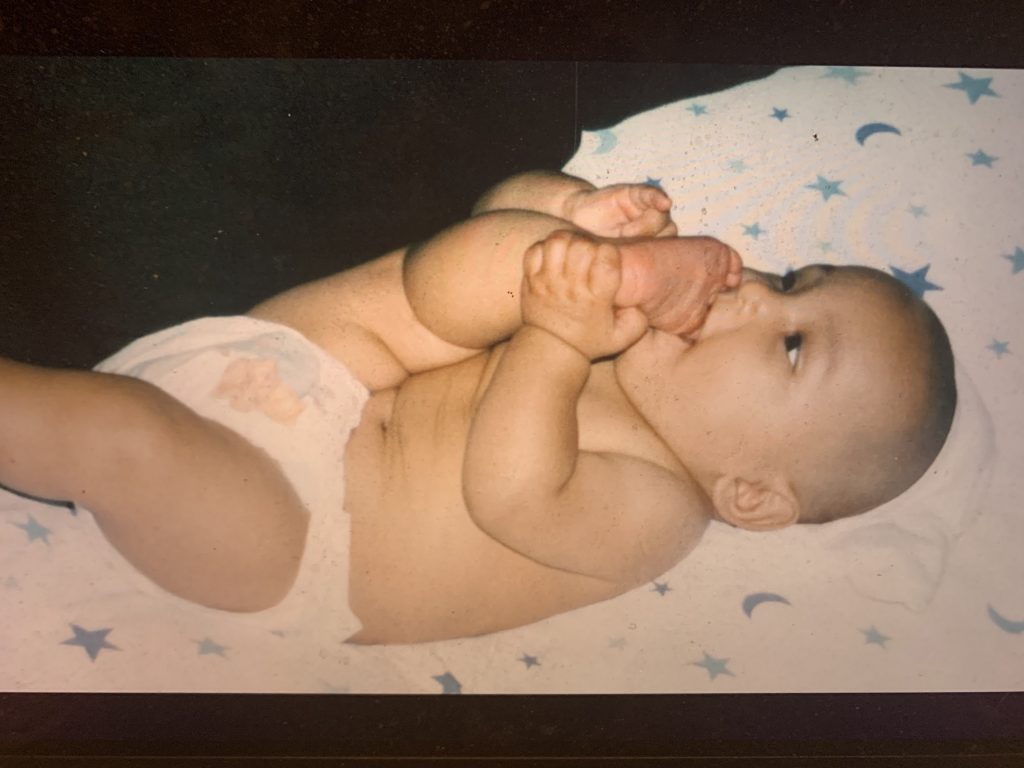
The circumstances of the seven months leading to Gabriel’s death were harrowing. His earlier childhood had been a chaotic prelude to this final devastation. Gabriel’s mother, Pearl Fernandez, did not want him and his father, Arnold Contreras, cycled in and out of prison. When Gabriel was three days old, his mother gave him to his great-uncle, Michael Carranza, and his partner, David Martinez, to raise. Gabriel lived with them until he was 4 years old. Then, he went to live with his grandparents, Sandra and Robert Fernandez, until seven months before his death. At that point, he moved in with Pearl Fernandez alongside his siblings, Ezequiel and Virginia.
According to documents produced during the murder trials of Pearl Fernandez and her live-in boyfriend, Isauro Aguirre, they were receiving Temporary Assistance for Needy Families (TANF) benefits. Further, it was suspected that those benefits were the only reason that the three children had been brought to live with Fernandez and Aguirre over the objections of Gabriel’s grandmother. In fact, Gabriel’s grandmother even went so far as to tell two sheriff’s deputies that her daughter Pearl had a history of neglecting and abusing her children. The two deputies did not heed her warning. When Gabriel relocated from his grandparents’ to his mother’s address, he was required to change schools. That move brought him and Jennifer Garcia together in October.
As Garcia walked into the office to receive her new student, she was immediately struck by the two adults sitting with him. Garcia noticed that, compared to other parents, the adults did not seem particularly affectionate with or attentive to their child. She had the impression that the adults seemed hardened in some way, even possibly dangerous. As she later recalled, “My first thought was, you don’t want to get on their bad side.”
In contrast, Garcia found Gabriel attentive, eager for her praise and keen to help her around the classroom. One day towards the end of October, Gabriel asked her, “Is it normal for moms to hit their kids?”
Well, yeah,” Garcia responded, “Let’s talk about it at recess.”
At recess, Gabriel continued, “Is it normal for your mom to hit you with the part of the belt that has that metal thing on the end?”
“You mean the buckle?” Garcia questioned, starting to become concerned.
“Yeah,” Gabriel replied, “is it normal for you to bleed?”
It was at that moment that Garcia decided to call the child abuse hotline at the end of the school day.

When school let out, Garcia sat at her desk and dialed the hotline number. As the phone rang, Garcia was still unsure whether she had made the right decision to call. After all, plenty of parents spanked their children, surely that alone did not qualify as abuse. Also, Gabriel had only been in her class for a couple of weeks. Maybe there was some bit of context that she was missing. After her phone call was answered by a caseworker named Steve Reid and she explained about the buckle and the blood, he said, “OK, I’m going to stop you right there. That would be reportable.” In a transcript of the call, Garcia also told Reid that, during the school’s annual Red Ribbon Week, where teachers warn about the dangers of drugs, Gabriel had feigned snorting a line of cocaine.
Reid’s report of the call entered the DCFS apparatus. Its first stop was the desk of Stefanie Rodriguez, a 27-year-old newcomer to the department. Rodriguez was responsible for investigating and assessing Gabriel’s safety, since the vital position of child abuse investigator was filled by the new hires. She had degree in psychology but not social work. Rodriguez called Garcia to let her know that she had been assigned to investigate the teacher’s claims and also told Garcia to call her directly if she noticed further signs of abuse. Rodriguez was supervised by 33-year-old Kevin Bom, who would be responsible to sign off on her reports and monitor the key decisions she made in Gabriel’s case. Bom graduated with a master’s degree from the University of Southern California’s School of Social Work.
The fastest and easiest way for a DCFS social worker to begin an investigation is to look in its own files for any prior family history. It is not known whether Bom or Rodriguez took this step (Bom and Rodriguez were fired from DCFS. It was not possible to locate them for this story). Yet, if they had done even a cursory review of Pearl Fernandez’s DCFS history, major red flags should have gone up. In the previous decade, multiple hotline calls had been made, alleging that Fernandez’s children were abused and neglected by her. In fact, reports from those calls showed that Fernandez had abandoned a daughter, Destiny, and lost custody of another son, Arnold, Jr., who was only a year older than Gabriel.
Two days after Jennifer Garcia’s call to the hotline, Rodriguez climbed the stairs to a second-floor apartment in Palmdale that overlooked a Starbucks and two dollar stores to interview Gabriel and his mother. Despite the clearly defined department policy that demanded children be interviewed apart from their parents, Gabriel stood in the same room as his mother. Rodriguez then asked him about being hit. Unsurprisingly, Gabriel told Rodriguez that he had fabricated the story about his mother hitting him with a belt buckle. Nevertheless, Rodriguez conducted a physical examination of Gabriel and found a bruise on his buttocks. It was then that his mother confessed to hitting him with a belt.
In spite of the mother’s confession, neither Rodriguez nor Bom thought the bruise was significant enough to take further action to secure Gabriel’s safety. According to Rodriguez’s notes, the only outcome was a request for Fernandez and her boyfriend to undergo drug testing, based on Garcia’s report of Gabriel demonstrating how to snort cocaine. The test results came back negative.
The interview by the inexperienced Rodriguez, including the lapse in DCFS policy, had defining and costly implications for Gabriel in the months ahead. Attorney Carly Sanchez, whose areas of practice include child abuse cases, echoed this point. When asked about the effects a social worker’s failure to properly investigate have on youthful victims of abuse, she stated:
It has a huge effect on the child. Because if the child has reported abuse, which is a difficult thing to do and then social workers come in and determine it’s not happening, which essentially means they’ve determined the child is lying about it, and they choose to leave the kid in that home, then the kid is that much more reluctant to come forward if the abuse is continuing.
Furthermore, when a social worker is sent into a home on an investigation related to a child who is being abused by a parent, “…at this point the parent knows that they’ve disclosed to someone that they’re being abused.” Ultimately, if the social worker does not take the necessary steps in aiding the one suffering abuse, “…the child has learned, hey, there’s no point in telling any adults, because they’re not going to help me and perhaps my life will get worse.”
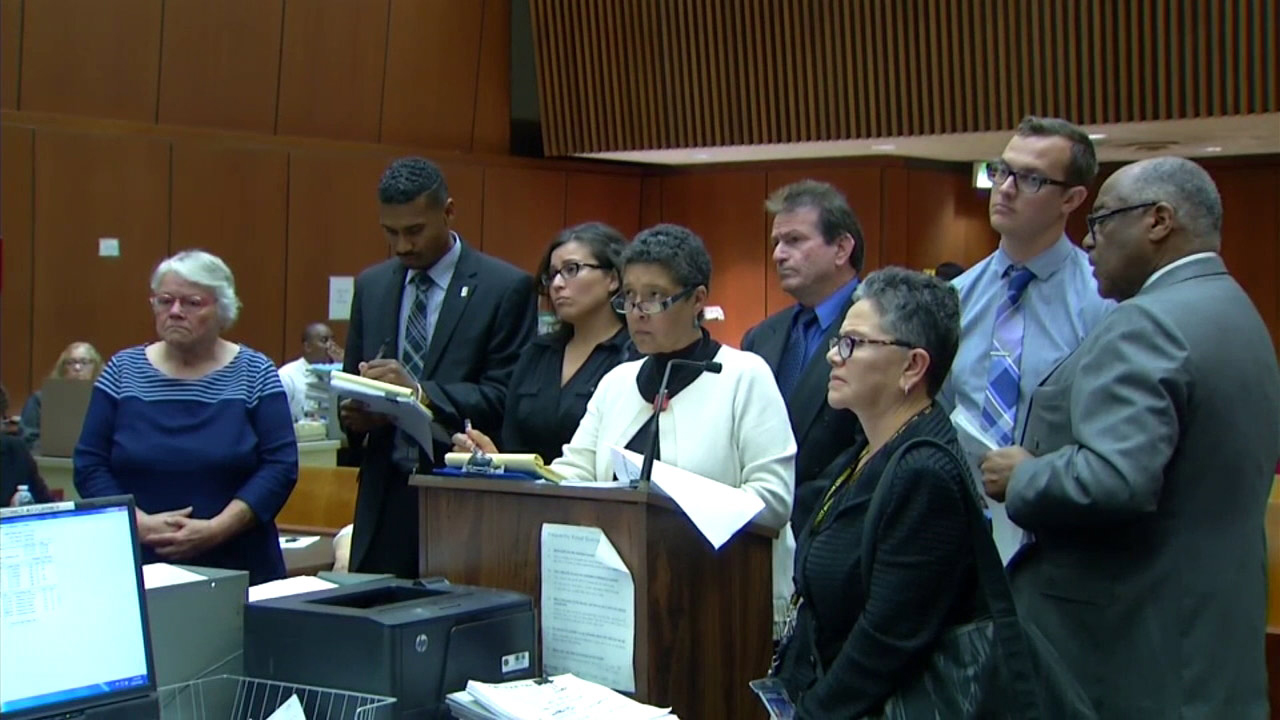
Several days after Rodriguez completed her investigation, Garcia sat in her classroom for a scheduled parent-teacher conference with Gabriel’s mother. Garcia intentionally left the door open because she was concerned about being alone with Pearl Fernandez. As Garcia described Gabriel’s progress in her class, Fernandez blurted out of nowhere, “I don’t hit my kids.” “Oh… OK,” said Garcia. She steered the conversation back to Gabriel’s academics.
Three weeks after her initial interview with Gabriel and his mother, Rodriguez returned for a follow-up visit. Her notes of the visit stated that she had “…observed the children to be appropriately dressed, visibly healthy, and did not have any marks or bruises.”
At the end of November, that all changed. One day, Gabriel was late for class and when he arrived, the other children looked at him, starting to point and laugh. The reason for their laughter: chunks of hair had been ripped out of Gabriel’s head, leaving scabs all across his scalp. As the laughter of the other children grew, Gabriel froze. Later, Garcia coached Gabriel through the responses of mind your own business and so what? They became his standard answers to his classmate’s continued queries over the coming months.
Garcia called the principal in to look at the scabs on Gabriel’s scalp. As Gabriel approached, the principal said, “It’s OK, son. Have a seat.” Then, he turned to Garcia, admonishing her, “We don’t investigate. We just report what we see.” That afternoon, Garcia left a detailed message for Rodriguez, explaining what she had witnessed. Two days later, Garcia called again, trying to reach Rodriguez, and left her another message.
The next morning, Gabriel walked into school with his lip split open. When Garcia noticed the injury, she asked him what happened. “My mom punched me in the mouth,” Gabriel told her softly. This admission prompted Garcia to contact Rodriguez yet again. This time, Garcia reached her and began to press Rodriguez about the results of her investigation. What about the injuries? What did his mother, who seemed to be at the center of all of this, have to say? Rodriguez responded that, due to the confidentiality rules of her department, she was not able to discuss these matters with Garcia.
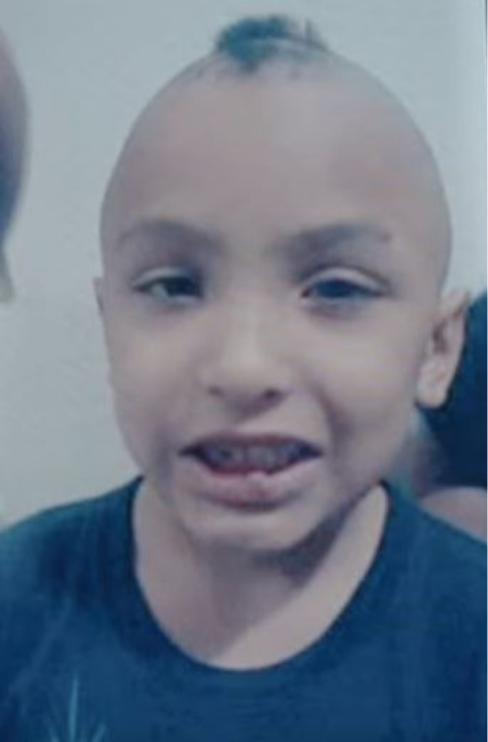
After Rodriguez received Garcia’s multiple reports of suspected abuse, she returned to Gabriel’s apartment to investigate. Once more climbing the stairs to the apartment, Rodriguez interviewed Gabriel and his mother, again failing to separate the two of them. In the course of the interview, Gabriel recanted the account of his injury he gave Garcia. In a report prepared by Rodriguez, she stated Gabriel had been biting himself and that was the cause of his injury. The report described the sore on his lip as an “…open blister.”
As the weeks passed, Garcia noticed a sharp decline in Gabriel’s physical and emotional health. He would often complain to her about pain in his legs and arms. On more than one occasion, she found him crying, saying he did not want to return home after school. During this time, Garcia frequently had to move Gabriel’s seat in class because he had started kicking other students. Also, she observed that he barely went out to play during recess. On the off chance that Gabriel went outside, instead of seeing him interact with other children, Garcia witnessed him standing alone, kicking a brick wall in the schoolyard.
One day at the end of January 2013, as Garcia stood teaching at the front of the class, the door swung open to reveal Gabriel. There was no laughter this time, not even a sound, as both teacher and students looked towards him, unsure of what they were seeing. The skin around Gabriel’s eyes was puffy and swollen. He had little, purple welts all over his face. So as not to draw extra attention to his condition, Garcia told Gabriel to take his seat. Once Garcia was able to get Gabriel alone while the other students were at recess, she questioned him about what happened to his face.
“I fell,” Gabriel replied.
“I don’t believe you Gabriel,” Garcia responded.
It was then that the anger that Garcia observed, which had been steadily building over the last two months, exploded out of Gabriel.
“It’s because my mom shot me with a BB gun!”
“OK,” Garcia hesitated, not quite sure how to respond. Then, “Why did you lie to me and tell me you fell?”
“When I tell you, and that lady comes, then I get hurt worse.”
After school, Garcia called Stefanie Rodriguez. She listened to the ringing, unable to shake the feeling that she might be complicit in Gabriel’s pain and suffering. After all, by his admission, her calls only seemed to be making things worse. When Rodriguez finally answered, Garcia reported what Gabriel told her. She also pressed the social worker for more information about what was being done to protect Gabriel. Again, Rodriguez refused to tell Garcia anything, citing confidentiality.
In reviewing Garcia’s actions over the course of these three incidents, it is the assessment of Deputy District Attorney Jonathan Hatami, the lead prosecutor in the murder trials of Gabriel’s mother and her live-in boyfriend, that the teacher could have done more to help the increasingly traumatized boy seek refuge. “She only called the DCFS hotline,” Hatami said, “You see other areas where they only call the police. You need to call both.” Understanding the necessity of calling both the police and the DCFS hotline, Hatami believes, is a message that “…needs to be constantly put out to the public.” The reason he feels that way:
First off, they both do different things. Second off, it’s better to have more than one eye, you know, you have more sets of eyes on what’s going on with the abusive situation. Social workers deal with a much different issue than police do, police deal with crimes. So, when police go out there and investigate, they’re investigating if a crime occurred. Social workers, their main job is to protect the child and they’re assigned to that child.
Unfortunately, it seems that more sets of eyes did not help prevent the tragic death of Gabriel Fernandez. The narrative did not end with a teacher and two social workers. It continues, following the involvement of two more social workers, two therapists, a security guard and sheriff’s deputies, all of whom had a crystal clear view of the abuse Gabriel suffered. Despite that direct line of sight, they all failed to protect this vulnerable child from the torturous harm he endured at the hands of his abusers in the last months of his life.

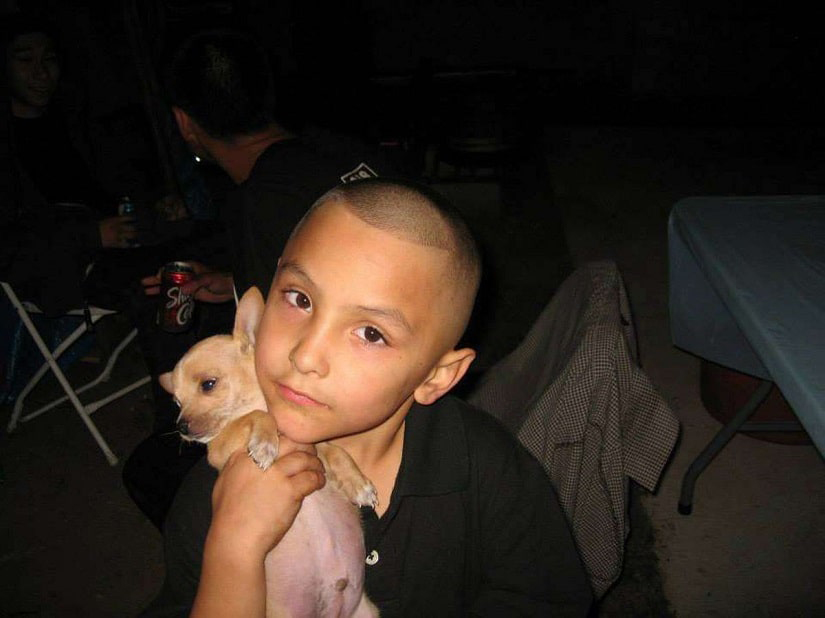
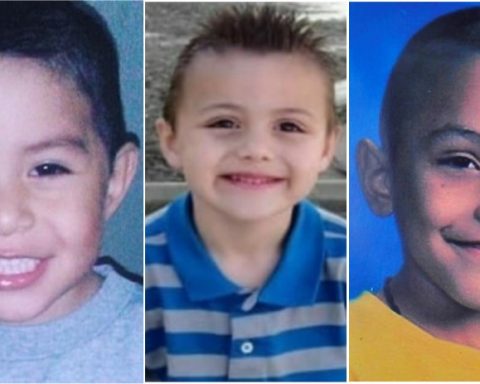
Follow Us